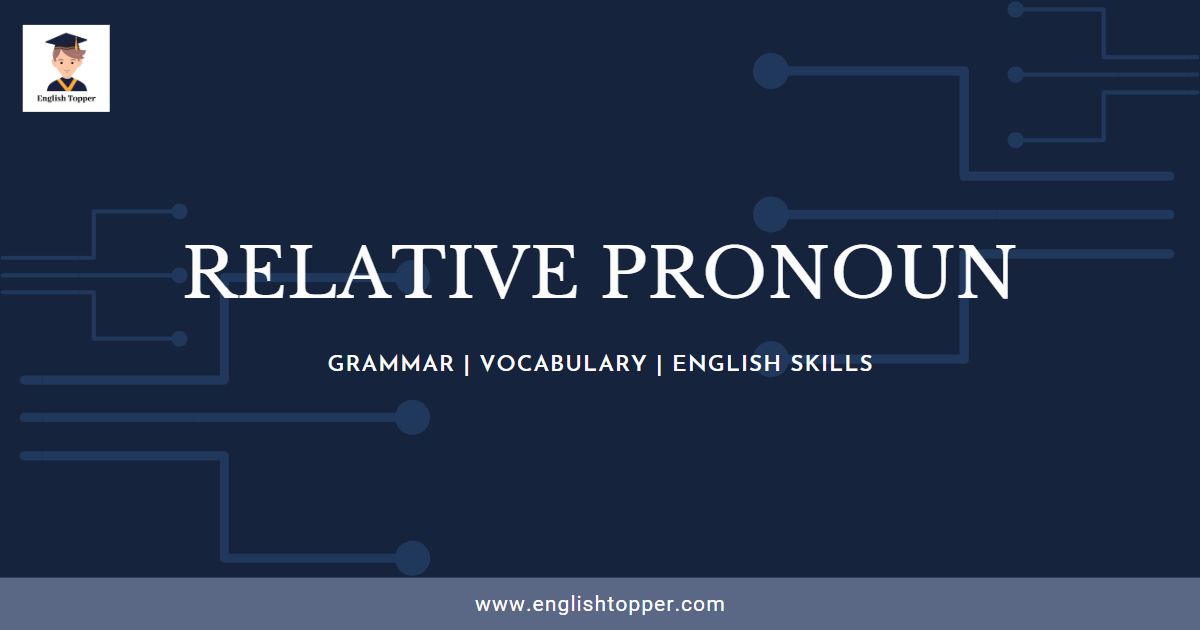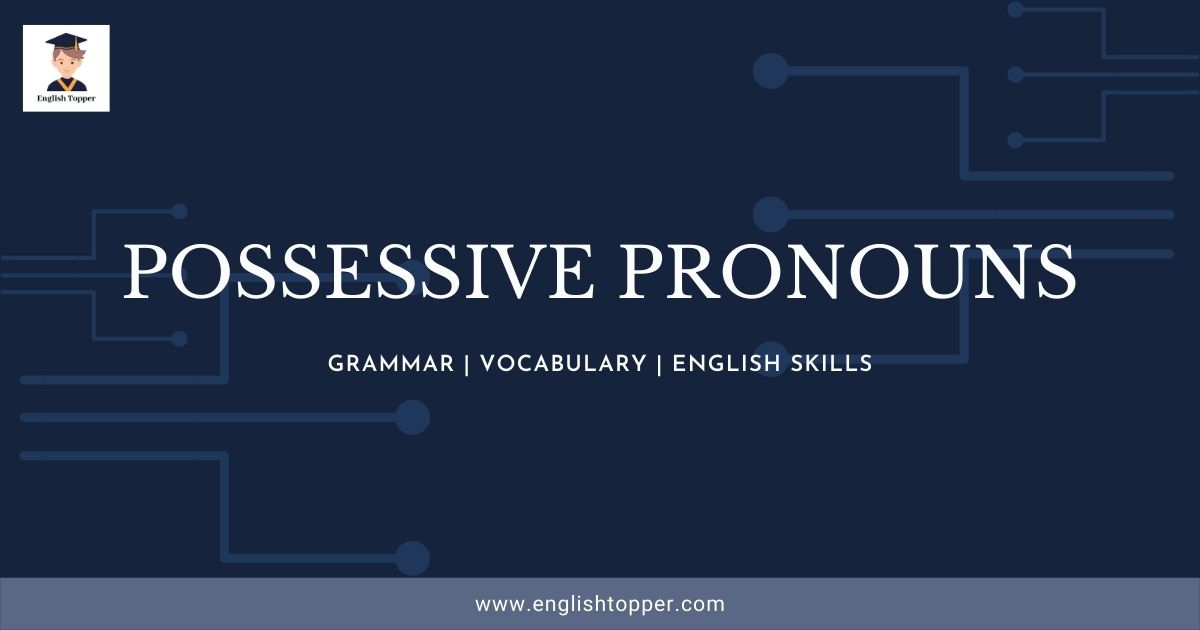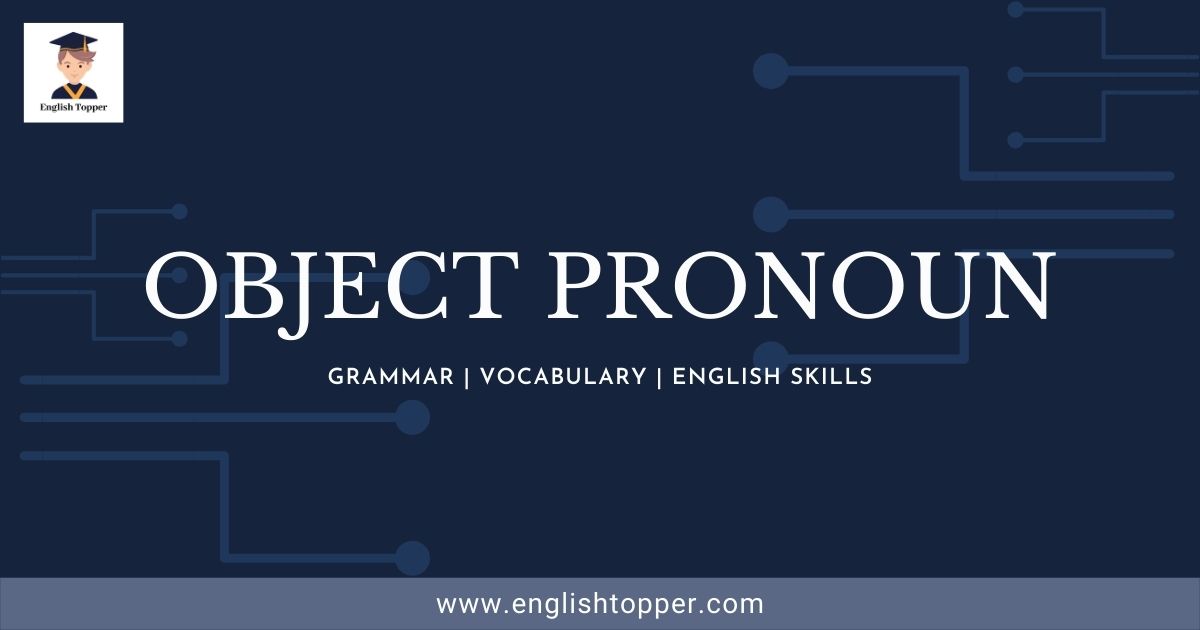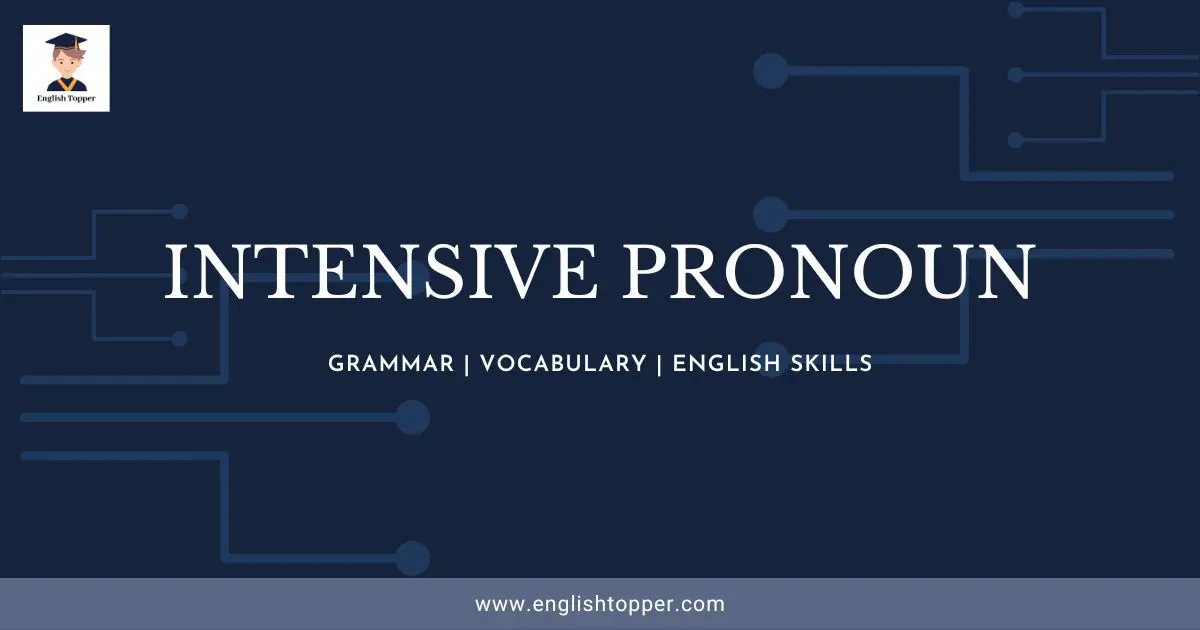|
Getting your Trinity Audio player ready...
|
Table of Contents
What are Relative Pronouns?
Relative pronoun is a type of pronoun, that is used to refer back to a noun or pronoun that has already been mentioned. In other words, it introduces subordinate clauses and connects them to the main clause in a sentence.
There are five main relative pronouns in the English language, those are,
- who
- whom
- whose
- that
- which
These pronouns are used to provide additional information about a noun or pronoun that has already been mentioned in the sentence.
Let’s take a closer look at each of these relative pronouns and how they are used in sentences:
- Who and whom are used to refer to people. Who is used as the subject of the subordinate clause, while whom is used as the object. For example:
- The woman who owns the store is very friendly. (Who is the subject of the clause “who owns the store”).
- The man whom I saw at the store was very tall. (Whom is the object of the clause “whom I saw at the store”).
It’s important to remember that, who is used when the pronoun is the subject of the clause, while whom is used when the pronoun is the object of the clause. Here are a few more examples to illustrate this point:
- The student who got the highest grade on the exam was very proud. (Who is the subject of the clause “who got the highest grade on the exam”).
- The teacher whom the students admire is very kind. (Whom is the object of the clause “whom the students admire”).
- Whose is used to show possession or ownership. It can be used to refer to people or things. For example:
- The boy whose dog I saw at the park was very friendly. (Whose refers to the boy and shows that the dog belongs to him).
- The store whose window was broken had to close for the day. (Whose refers to the store and shows that the window belongs to it).
Here are a few more examples of how whose is used to show possession:
- The woman whose wallet I found turned out to be my neighbour. (Whose refers to the woman and shows that the wallet belongs to her).
- The company whose products I always buy has excellent customer service. (Whose refers to the company and shows that the products belong to it).
- That is used to introduce a clause that provides more information about the noun or pronoun it refers to. It can be used to refer to people, animals, or things. For example:
- The book that I read last night was really interesting. (That refers to the book and provides more information about it).
- The cat that I saw in the park was chasing a bird. (That refers to the cat and provides more information about it).
Here are a few more examples of how that is used to provide additional information about a noun or pronoun:
- The movie that I watched last weekend was really good. (That refers to the movie and provides more information about it).
- The car that I rented for my road trip was very comfortable. (That refers to the car and provides more information about it).
- Which is used to introduce a clause that provides additional information about the noun or pronoun it refers to. It can be used to refer to people, animals, or things. For example:
- The car which I bought last week is already having problems. (Which refers to the car and provides additional information about it).
- The dog which I adopted from the shelter is very playful. (Which refers to the dog and provides additional information about it).
Also Read: Intensive Pronoun | (Easy Definition & Examples 2022)
An Intensive Pronoun is a type of pronoun that is used to give importance (emphasis) to the subject or antecedent in the sentence. In other words, it is also defined as the pronoun that ends with “-self” or “-selves” and places emphasis on its antecedent in the sentence. (Read More)
More Similar Examples of Relative Pronoun
Relative Pronoun: Who
Here are a few examples of sentences that use the relative pronoun “who” to introduce a clause providing additional information about a noun or pronoun:
- “The person who I met at the store was very nice”. (The clause “who I met at the store” provides additional information about the noun “person” and is the subject of the clause).
- “The people who were at the party were all my friends”. (The clause “who were at the party” provides additional information about the noun “people” and is the subject of the clause).
- “I don’t know who you are talking about”. (The clause “who you are talking about” provides additional information about the pronoun “who” and is the object of the clause).
- “The woman who I spoke to was very beautiful”. (The clause “who I spoke to” provides additional information about the noun “woman” and is the object of the verb “spoke”).
It’s important to note that “who” should only be used to refer to people, not things. If you want to refer to a thing, you should use “that” instead. For example:
- Incorrect: “The car who I bought last week is really fast”.
- Correct: “The car that I bought last week is really fast”.
Relative Pronoun: Whom
Here are a few examples of sentences that use the relative pronoun “whom” to introduce a clause providing additional information about a noun or pronoun:
- “The actor whom I admire the most is Tom Hanks”. (The clause “whom I admire the most” provides additional information about the noun “actor” and is the object of the verb “admire”).
- “The scientist whom I interviewed for my research paper was very knowledgeable.” (The clause “whom I interviewed for my research paper” provides additional information about the noun “scientist” and is the object of the verb “interviewed”).
- “The teacher whom the students respect the most is Mrs. Smith.” (The clause “whom the students respect the most” provides additional information about the noun “teacher” and is the object of the verb “respect”).
- “The politician whom the media has been criticizing recently is unpopular.” (The clause “whom the media has been criticizing recently” provides additional information about the noun “politician” and is the object of the verb “criticizing”).
It’s important to note that “whom” is relatively formal and is not used as frequently in spoken English as it is in written English. In spoken English, it is more common to use “who” in the object case. However, “whom” is still considered correct and is often used in formal written English.
Relative Pronoun: Whose
Here are a few examples of sentences that use the relative pronoun “whose” to introduce a clause providing additional information about a noun or pronoun and indicating possession or ownership:
- “The artist whose paintings I admire the most is Vincent van Gogh”. (The clause “whose paintings I admire the most” provides additional information about the noun “artist” and indicates that the artist owns the paintings).
- “The scientist whose research I referenced in my paper is very well-known”. (The clause “whose research I referenced in my paper” provides additional information about the noun “scientist” and indicates that the scientist owns the research).
- “The teacher whose class I enjoyed the most is Mrs. Smith”. (The clause “whose class I enjoyed the most” provides additional information about the noun “teacher” and indicates that the teacher owns the class).
- “The politician whose policies I disagree with is unpopular”. (The clause “whose policies I disagree with” provides additional information about the noun “politician” and indicates that the politician owns the policies).
It’s important to note that “whose” should not be confused with “who’s”, which is a contraction of “who is”. For example:
- Correct: “Who’s coming to the party?” (This means, “Who is coming to the party?”).
- Incorrect: “Whose coming to the party?” (This does not make sense – it should be “Who’s coming to the party?”).
Relative Pronoun: Which
Here are a few examples of sentences that use the relative pronoun “which” to introduce a clause providing additional information about a noun or pronoun:
- Essential clauses:
- “The book which I bought yesterday is excellent”. (The clause “which I bought yesterday” provides necessary information about the noun “book” and cannot be omitted without changing the meaning of the sentence).
- “The car which I rented for the weekend was very comfortable.” (The clause “which I rented for the weekend” provides necessary information about the noun “car” and cannot be omitted without changing the meaning of the sentence).
- Non-essential clauses:
- “The museum, which I visited last weekend, was very interesting”. (The clause “which I visited last weekend” provides additional, but not necessary, information about the noun “museum” and can be omitted without changing the meaning of the sentence).
- “The city, which is known for its beautiful parks, is a popular tourist destination”. (The clause “which is known for its beautiful parks” provides additional, but not necessary, information about the noun “city” and can be omitted without changing the meaning of the sentence.)
It’s important to note that “which” should only be used to refer to things, not people. If you want to refer to a person, you should use “who” instead. For example:
- Correct: “The person who I met at the store was very nice”.
- Incorrect: “The person which I met at the store was very nice”.
Also Read: What is a Pronoun? | Pronoun Definition and Examples
The pronoun is a part of speech which replaces the repeated Noun in the sentence. For example, he, she, it, we, they, you, etc. (Read More)
Relative Pronoun: That
Here are a few unique examples of sentences that use the relative pronoun “that” to introduce a clause providing additional information about a noun or pronoun:
- Essential clauses:
- “The book that I bought yesterday is really good”. (The clause “that I bought yesterday” provides necessary information about the noun “book” and cannot be omitted without changing the meaning of the sentence).
- “The car that I rented for the weekend was very comfortable”. (The clause “that I rented for the weekend” provides necessary information about the noun “car” and cannot be omitted without changing the meaning of the sentence).
- Non-essential clauses:
- “My sister, who lives in New York, is coming to visit next week”. (The clause “who lives in New York” provides additional, but not necessary, information about the noun “sister” and can be omitted without changing the meaning of the sentence).
- “The movie, which I saw last night, was really good.” (The clause “which I saw last night” provides additional, but not necessary, information about the noun “movie” and can be omitted without changing the meaning of the sentence).
It’s important to note that “that” should only be used to refer to things, not people. If you want to refer to a person, you should use “who” instead. For example:
- Correct: “The person who I met at the store was very nice”.
- Incorrect: “The person that I met at the store was very nice”.
Common Mistakes while using Relative Pronoun
There are several mistakes that people commonly make when using relative pronouns in English. Here are a few examples:
- Using “that” instead of “who” or “whom”: “That” should only be used to refer to things, not people.
- For example: “The person that I met at the store was very nice” is incorrect – it should be “The person who I met at the store was very nice”.
- Omitting the relative pronoun entirely: In some cases, the relative pronoun can be omitted entirely if it is the subject of the clause.
- For example: “The book I bought yesterday” can be shortened to “The book I bought yesterday (that) is really good”. However, this is only acceptable if the relative pronoun is the subject – if it is the object of the clause, it cannot be omitted.
- Using “which” instead of “that”: “Which” should only be used to introduce non-essential clauses, while “that” should be used to introduce essential clauses.
- For example: “The house which I grew up in was small” is incorrect – it should be “The house that I grew up in was small”.
- Confusing “whose” and “who’s”: “Whose” is the possessive form of “who” while “who’s” is a contraction of “who is”.
- For example: “Who’s house is this?” is incorrect, instead it should be “Whose house is this?”
By being aware of these common mistakes and making a conscious effort to avoid them, you can improve your use of relative pronouns in English.
Summary
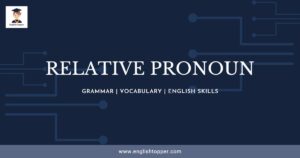
- Relative Pronouns are used to refer back to a noun or pronoun that has already been mentioned.
- Few examples of Relative Pronoun are, who, whose, that, whom and which.
- Who and whom are used to refer to people. Whereas, Who is used when the pronoun is the object of the clause.
- That is used to introduce a clause that provides more information about the noun or pronoun it refers to.
- Which is used to introduce a clause that provides additional information about the noun or pronoun it refers to.
If you are interested to learn more, then you can refer to Wikipedia here.
I hope that you understood the topic well. If you still have any doubts, then comment down below, and I will respond as soon as possible. Thank you 🙂

